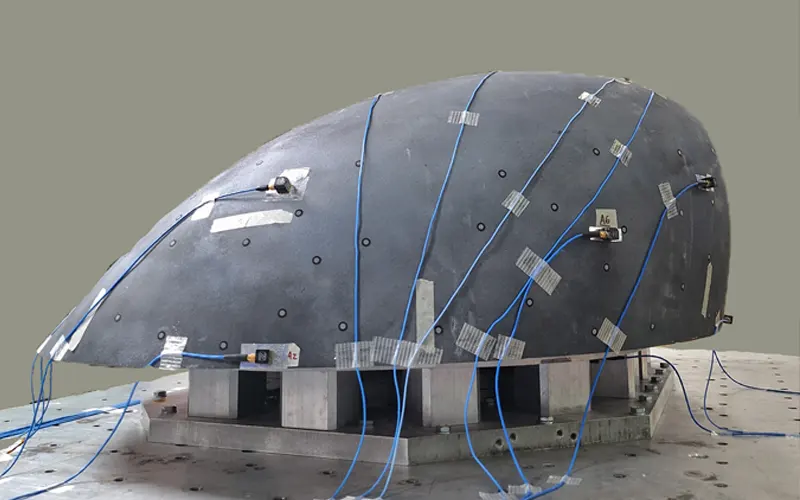The Italian Aerospace Research Centre (CIRA) has completed the structural dynamic qualification testing campaign of the Space Rider nose cone, marking a key milestone in the development of the vehicle’s Thermal Protection System.
Space Rider consists of two main sections: the expendable Service Module and the reusable Re-entry Module. The latter is designed to fly up to six missions with only minimal refurbishment between flights. The Re-entry Module’s multi-element Thermal Protection System, a key enabler of its reusability, shields the vehicle from extreme heat and mechanical stress during atmospheric re-entry.
The nose cone, a single fibre-reinforced ceramic structure with a diameter of 1.3 metres, is the largest single component of the Thermal Protection System. This monolithic dome is made from a proprietary material called ISiComp, developed by CIRA and its partner Petroceramics. Weighing just 40 kilograms, it is designed to withstand temperatures of up to 1650°C while maintaining its aerodynamic shape with deformations of no more than one millimetre.
On 9 July, CIRA announced the completion of the Space Rider nose cone’s structural dynamic qualification testing campaign. The tests were conducted at CIRA’s Space Qualification Laboratory in Campania, Italy, and were designed to assess the nose cone’s behaviour under the vibrational loads it will experience during launch.
“The success of these tests is the culmination of four years of intense work and paves the way for the completion of the Space Rider TPS,” explained CIRA Program Manager Giuseppe Rufolo.
With the structural design now validated, CIRA will move ahead with the production of the first flight-ready nose cone.
CIRA has also completed the qualification of the Space Rider body flaps, another important element of the vehicle’s Thermal Protection System that is also manufactured from the same ISiComp material. The organisation announced the successful qualification of the body flap’s design in February.
